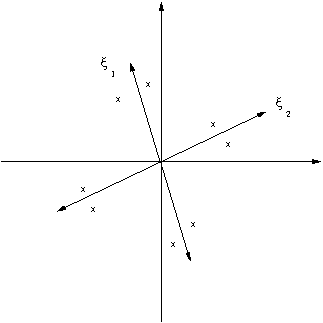Homework 10, due 5:00pm, December 11.
Posted: Fri Dec 07, 2007 3:11 pm
Consider
- Determine a linear differential equation that is a good approximation of this one near the points
- Near each of those points, find the analytical solution to this linear approximation.
- Near the point
- Near the point
 are vectors and x1 and x2 are x(t) and the derivative of x(t) respectively.
are vectors and x1 and x2 are x(t) and the derivative of x(t) respectively.
Plot these vectors. Plot (-1) times these vectors. Compare the linear and nonlinear solutions for 8 different initial conditions, one close to and on each side of the vectors plotted, as indicated by the "x"s illustrated in the following figure.





